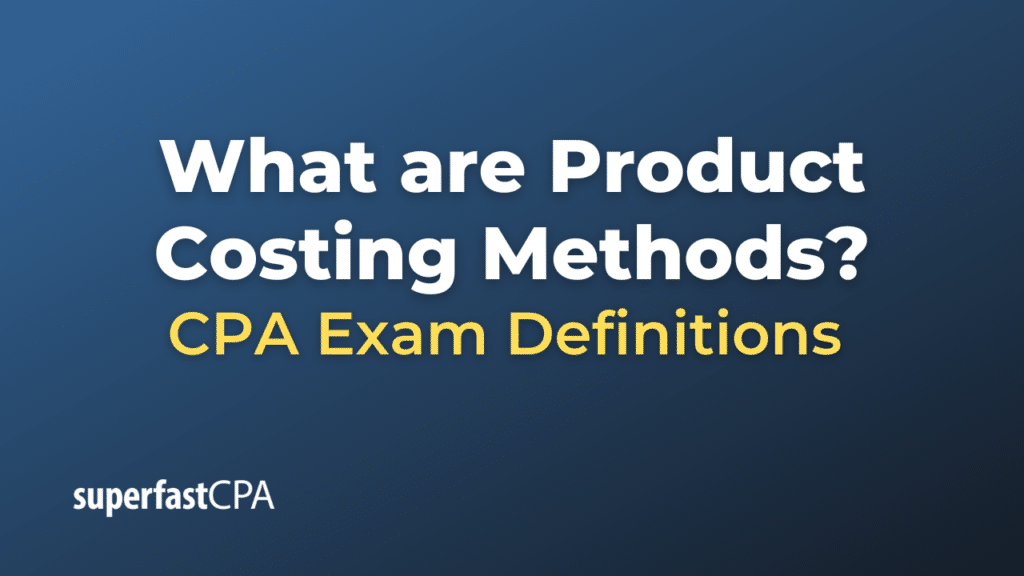
You may need to buy state-of-the-art equipment for your developers and other team members. Put simply, understanding the costs of developing a product, feature, or update helps you make more informed decisions throughout the product lifecycle. Product cost refers to the total expenses incurred during the development, production, and maintenance of a software product or technology solution. It encompasses a wide range of costs, including research, design, development, testing, deployment, and ongoing support and maintenance.
What are the different types of cost drivers under ABC?
In the automotive industry, as well as other industries in which products are comprised of many assembled parts, multiple costing is frequently applied. Job costing and contract costing are the same in terms of their underlying principles. Job costing and contract costing are also frequently referred to as terminal costing. Deskera ERP is a complete solution turbotax troubleshooting that allows you to manage suppliers, track supply chain activity in real time, and streamline a range of other company functions. The condition of your inventory has a direct impact on production planning, people and machinery use, and capacity utilization. Fixed overheads- Such as rent, are expenses that are constant regardless of the volume of output.
- The advantage of target costing is that it ensures that products are designed and priced to meet customer needs because the focus is on the sale price, not on the cost of manufacturing.
- The core of the first course is to learn how companies record total costs and calculate unit costs for their individual products or services.
- In job costing, the costing of each job undertaken and executed is calculated.
- Price your item too high, and you could drive potential customers straight to your competitors.
Pricing Psychology:
These solutions allow you to quickly view your manufacturing and material expenses. Each approach establishes the cost of the inventory that is allocated to Cost of Goods Sold (CGS)/Work in Progress (WIP). They just care about the expenditures that are incurred when one more unit is generated.
Manufacturing Accounting

A unit or output (a driver) is used to calculate the cost of each activity consumed during any given period of time. Activity based Costing (ABC) is a systematic, cause & effect method of assigning the cost of activities to products, services, customers or any cost object. However, since standard costs are inexact, this costing method is not practical for many manufacturing situations and should be used with caution.
Introduction to cost accounting
Ascertaining and recording costs after they have been incurred is known as historical costing. It provides the management with a record of what has happened and, therefore, is a postmortem of the actual costs. Batch costing is suitable for companies producing general engineering goods, in which the components can be easily arranged in convenient economic batches. In pharmaceutical companies, batch costing is also used advantageously and effectively. Ideal food cost, on the other hand, is the target percentage that businesses aim to achieve for food costs, considering factors like pricing strategies, profit margins, and industry benchmarks. It represents the optimal cost structure that maximizes profits while maintaining quality.
Direct Costing
In contrast, businesses must take indirect expenses and/or overhead costs into account when making long-term pricing and profitability decisions. In activity-based costing, overhead costs are assigned to activities rather than products. A cost pool is a group of related costs incurred when performing a particular activity. The process of variance analysis involves calculating the difference between actual and standard costs and then investigating the underlying causes of these differences. This analysis can reveal valuable information about operational performance, helping businesses identify cost-saving opportunities and improve overall efficiency.
Contrary to other types of accounting, costing operations are carried out by an organization’s internal management. This internal management is not visible to clients or institutions from the outside. When choosing a cost system, you need to consider the nature of your business and the products you manufacture.
Tools like Pricefx and Vendavo can support pricing strategy development by providing data-driven insights and advanced pricing analytics. Product cost can be calculated by summing up all the direct costs (materials, labor) and indirect costs (overhead, administrative expenses) incurred in manufacturing a product. Standard costing uses predetermined standard costs for materials, labor, and overhead. The actual costs are then compared to the predetermined costs to identify variances and make adjustments. This method is useful when a company wants to identify areas of inefficiency and reduce costs.
